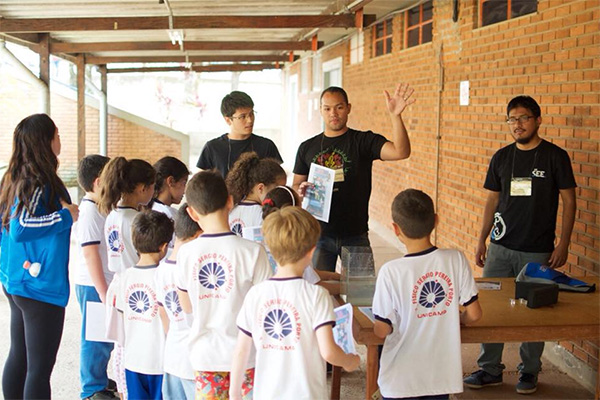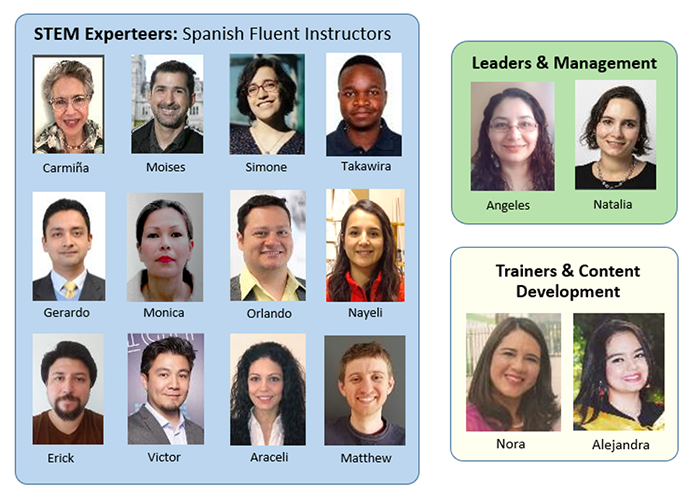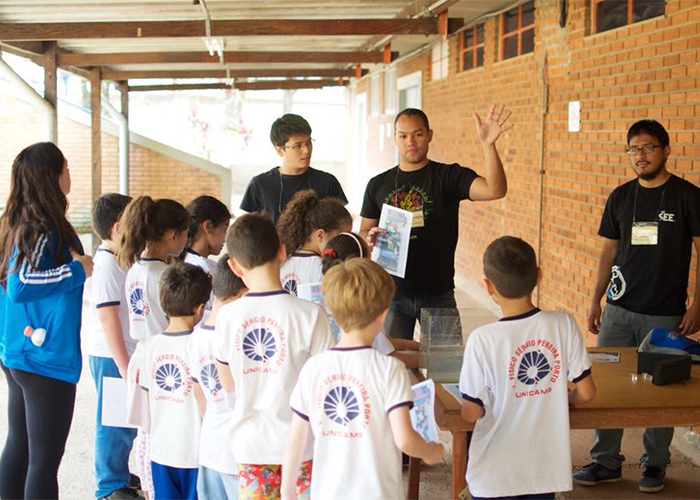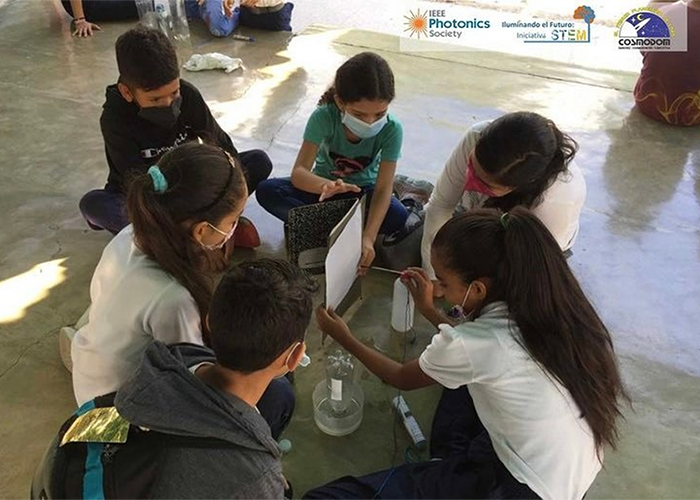Iluminando el Futuro: Lighting the Future of STEM in Latin America
Every year, universities worldwide open their doors to international students to join their research programs. Thousands of students move from one country to another with the dream to pursue higher education and increase their career opportunities. As a result, universities are cultural hubs that gather students and researchers from different backgrounds and varying languages, which enrich institutions with diverse values and culture.
This construct inspired two IEEE Photonics Society members, Natalia Cañas Estrada and Angeles Camacho, originally from Latin America and now based in Europe, to start a new STEM outreach initiative called "Iluminando el Futuro" (Light the Future). The purpose of this initiative was to inspire members and volunteers, regionally and internationally, to serve as K–12 mentors in their native language, Spanish.
Studies show that the concept of Social Identity Theory, based on a strong sense of connection to a specific group (ethnic, national, religious, regional), and maintaining your first language are critical to positive esteem and sense of belonging1. The volunteers’ goal for the initiative is to celebrate such culture in STEM and allow local and international members to give back to their home countries.
In its pilot stage, this initiative recruits and comprehensively trains STEM Outreach Ambassadors to create and implement their own outreach through light-focused STEM activities in areas including in South, Central, and North America, the Caribbean, the Bahamas, Mexico, Puerto Rico, and Jamaica. The training of Iluminando el Futuro includes conceptualizing, designing, and executing hands-on and virtual STEM concepts in an inclusive and accessible way in Spanish. It aims to promote long-term science dissemination to support development throughout Latin America, as well as narrowing the gaps between the science educators and underserved communities. Being able to effectively communicate STEM can help advance understanding of what engineers do and how they make discoveries that benefit humanity.
The Iluminando el Futuro training is divided into two parts: a self-paced virtual training and a synchronous workshop. The virtual training content includes methodology to plan, design, and deliver outreach activities in Spanish. During this training, “Experteers” (bilingual IEEE members and volunteers) who are also experienced STEM educators provide relevant concepts, best practices, and techniques for teaching light-focused concepts and interacting with children, youth, and the general public. The synchronous workshop follows as an interactive session where the STEM Outreach Ambassadors exchange ideas, discuss outreach plans, and receive feedback from peers, instructors, and Experteers to pursue their local outreach.
Currently, 44 STEM Outreach Ambassadors from 10 different countries are enrolled in the program. Thirty-two percent of the STEM ambassadors have concluded their training program and will be conducting presentations within classrooms, STEM after-school programs, and national science days.
This pilot aims to identify the most significant challenges STEM educators and community organizers face in this region and provide a network of support to overcome a lack of mentorship and role models. After this stage, the initiative, as Light the Future, will be open to other regions in the world, dialects, and languages, creating an international network of STEM Outreach Ambassadors to share best practices.
Estrada and Camacho jointly commented on the project’s expected outcome: “We hope this is the beginning of a strong collaboration in Latin America. We want to create opportunities for younger generations to find diverse role models and encourage volunteers working in STEM to share their work within their local communities and cultures.”
The second stage of the initiative for this region will begin in April 2022 and is seeking participants to enroll as STEM Outreach Ambassadors.
Enrollment for interested participants
Enrollment for experienced K-12 STEM educators to become STEM Experteers
1 Giles, H., & Johnson, P. (1981). The role of language in ethnic group formation. In J. C. Turner & H. Giles (Eds.), Intergroup behavior (pp. 199–243). Oxford: Basil Blackwell.
Abrams, D. and Brown, R. (1989) `Self Consciousness and Social Identity: Self-regulation as a Group Member', Social Psychology Quarterly 52: 311-18.
Lauring (2008) 'Rethinking Social Identity Theory in International Encounters: Language Use as a Negotiated Object for Identity Making'
Volume: 8 issue: 3, page(s): 343-361
Baily, W. and Spicer, A. (2007) `When Does National Identity Matter? Convergency and Divergence in International Business Ethics', Academy of Management Journal 50(6): 1462-80.









